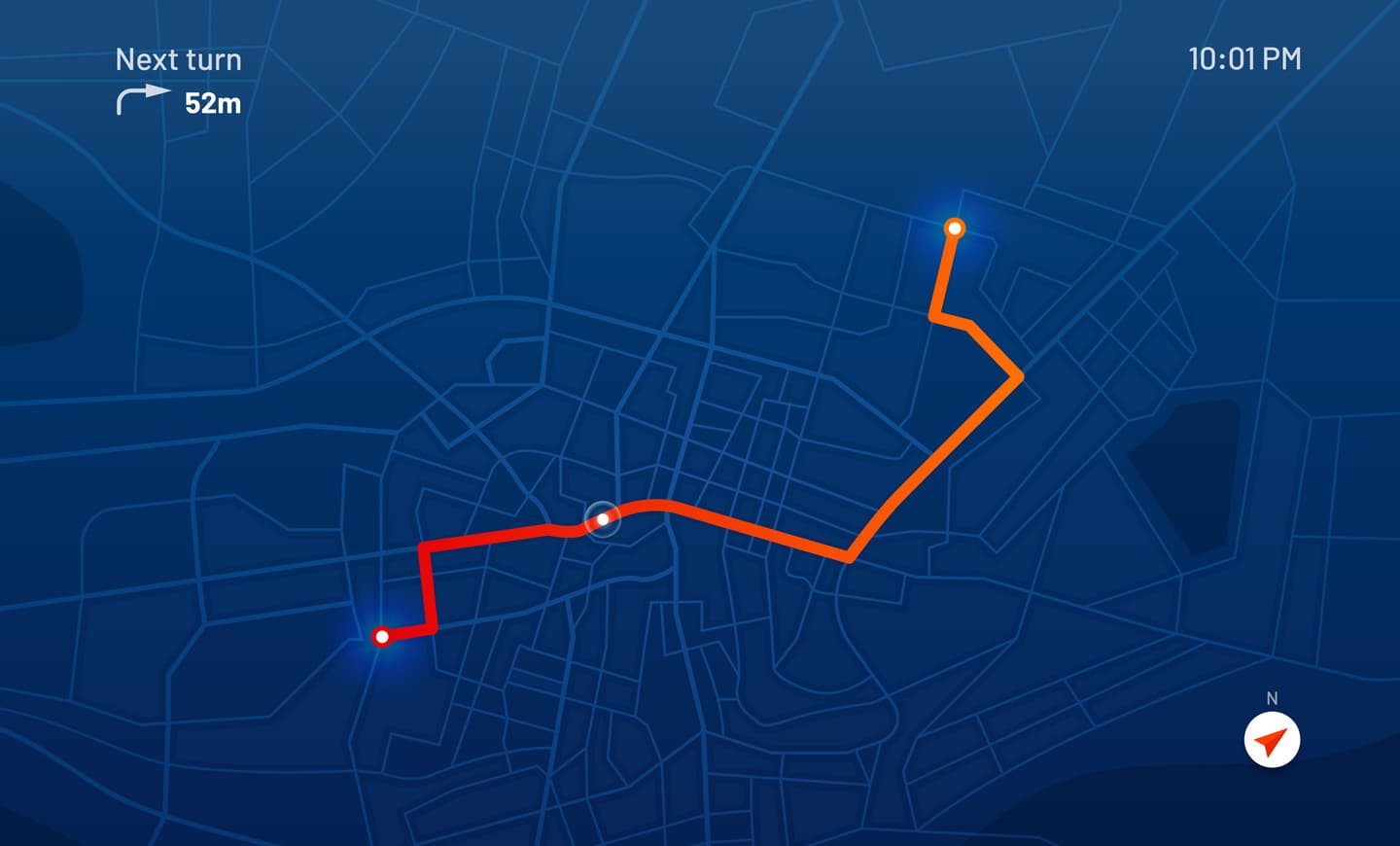We know where – but we need data for when
When cycling to a new place for the first time, you might have to find a new route—and the most common way is to look up the fastest one. But something that often falls out of the equation is safety since there isn’t that much information available about it. We at Futurice, therefore, started working on creating the safest bicycle routes.

Finding and evaluating data for cyclists is not always easy, since a lot of the data that is needed belongs to privately owned companies and different governmental organizations. But studying the data we actually have gotten hold of has made it easy to find routes that avoid high-risk areas, while simultaneously making the route fast. With this prototype, we’ve not only made commuting by bike fast, we’ve also made it safe.
At the moment, with the data we have acquired, we can currently determine the cycling routes in Stockholm with the most accidents. And this should be considered a big step in the right direction, as the information was nonexistent until recently. In some cases, it’s enough for the cyclists to think a second time before speeding their way to their destination. But in order to assure cyclists of when it’s safe to choose a certain route, we need additional information and data.
Our aim for the future would be to collect large amounts of quality data in order to run predictive models and let artificial intelligence (AI) identify locations where accidents are more prevalent. But if we are to do so, we need a lot more answers to our questions, something that is going to be a challenge. Machine learning and AI depend on large amounts of qualitative data. So if we are to create a product that aims to make cycling in the city safe, drivers, car manufacturers and other actors have to be generous enough to supply us with it.
We’ve come a long way since we started our work with The Safe Route. We’ve managed to get a hold of the coordinates to the most unsafe places in the city as well as establish an idea of what type of interchanges are the most recurring according to the data that STRADA (Swedish Traffic Accident Data Acquisition) has shared with us. This means we’re able to provide information based on the number of accidents and the places they occurred. But we’re not able to provide a full answer to the question "What is the safest route?" since there are a lot of factors that have to be accounted for.
Safety is a spectrum that can be defined by risk, time, causes of previous accidents among many other things. Answering the question of how safe a certain place might be is therefore difficult without the proper data to back it up. But determining what places are safe or not is on the other hand pretty easy. For example, crossings and roundabouts are the most recurring interchanges in the reports we’ve been able to analyze. Add the fact that the city center also has the highest density of accidents in Stockholm and you’re able to say that a crossing right next to T-Centralen simply isn't that safe.
But once we get a hold of data that tells us when accidents occur in certain neighborhoods, we will be able to give further intel as to when a route happens to be safe. Meaning, by adding more relevant data points from example electric scooters companies or building sites, the picture will get more nuanced. By having several data points, some areas might turn out to be more unsafe than what they are telling us from only one data set. Which in the end would provide for a better product.
In recent years we’ve seen an increase in couriers across the city. A profession that relies on time efficiency. You need to get from A to B as quickly as possible and give less thought about dangers. Not that the couriers or the companies are to be blamed for this. It’s just that it has led to an increase in cyclists across Stockholm. However, data surrounding factors like these are of the utmost importance for us when creating The Safe Route.
A future where cyclists actually can make a decision based on safety is not that far away. But for that to happen, we need the city of Stockholm, corporations, and organizations to release more data. Currently, we are having conversations with different companies and organizations that might play a big role, but there’s still a lot that can be done.
 Johan LauriAlumnus (Data & AI Tech Lead), Futurice
Johan LauriAlumnus (Data & AI Tech Lead), Futurice